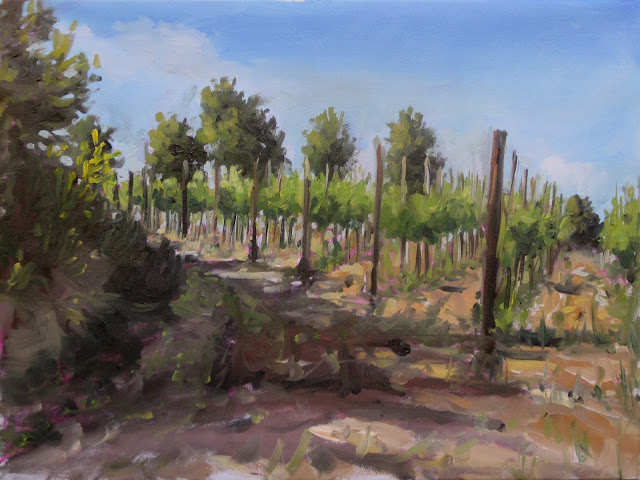 |
| Giovanni Fattori "Silvestro Lega che dipinge sugli scogli", 1866, Oil on Board, cm 12x28 |
Tuscany is not only famous for its breathtaking landscape and delicious wines, but also for its artistic legacy. It is considered the birthplace of Renaissance and has been home to many figures influential in the history of art.
Whereas everybody knows Leonardo da Vinci and Michelangelo, probably fewer people outside of Italy are familiar with the "Macchiaioli" painters.
This group, of about 20 artists, started an artistic movement which is now considered to have been the most important in Italy in the 19th century. Among them were Giovanni Fattori (1825–1908), Silvestro Lega (1826–95), Serafino da Tivoli (1826-92), Giuseppe Abbati (1836-68) and Telemaco Signorini (1835–1901).
Not all of them were Tuscan, but the movement developed in Florence, mainly between 1855 and 1870, around the central "Caffè Michelangelo", where the artists used to meet up to discuss art and politics. Their main supporter was the critic and art collector Diego Martelli, who was also the group's theorist, and who often hosted them in his house in Castiglioncello, by the coast, for painting retreats.
The name "Macchiaioli" derives from the term "macchia" (patch) and initially it had a negative and denigrating connotation. It refers to the fact that these artists used to apply colour in bold patches, creating strong contrasts, as they considered the areas of light and shadow to be the key components of a work of art. The result was a fresh and spotaneus simple construction.
This tecnique was very different from the conventional stlyle of the time, propagated by the Academy, and for this reason they were not appreciated by the critics of their time.
 |
Raffaello Sernesi "Tetti al sole" 1860 ca. cardboard, cm 12,3x19. Roma, Galleria Nazionale
d'Arte Moderna e Contemporeanea |
Their subjects were not conventional eighter, as they chose to represent everyday life scenes instead of literary or historical subjects. They were mainly landscape painters but also produced a quantity of portrait art, as well as a few historical works, due to the fact that some of them were involved in the uprisings of 1848 and the ongoing Risorgimento struggle, which would eventually lead to the unification of Italy.
 |
| Giuseppe Abbati "Stradina al sole" 1863-64. Milano, Jucker Collection |
The Macchiaioli painters have often been compared to the French Impressionists, who were active about twenty years later. The two groups had many things in common, like the passion for plein-air painting in order to better capture natural light, shade, and colour. However, due to a number of factors, the Tuscan painters never achieved the same fame and success as their French collegues.
Works by the Macchiaioli can be seen in several of the best art museums in Italy. If you happen to be in Livorno, you can visit the
Giovanni Fattori Museum, which houses a beautiful collection of some of the most meaningful works of the group.
Among my favourite paintings, I chose three images which, in my opinion, are particularly emblematic of their approach and style.















































